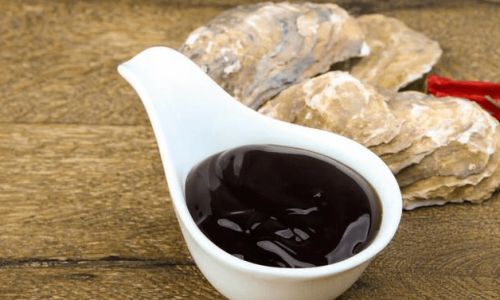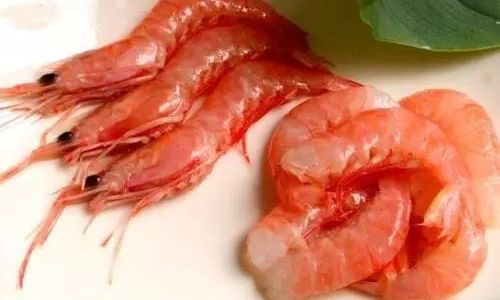Table of content
Cooking is both a science and an art, and one of the most critical skills a home chef or professional cook can master is the ability to season dishes effectively. The right combination of spices, herbs, salts, and acids can transform a simple meal into a memorable culinary experience. However, achieving balance and depth of flavor requires more than just randomly tossing ingredients into a pan. It demands an understanding of flavor profiles, timing, and the nuanced interplay between ingredients. This article explores the principles of seasoning, offering actionable tips to elevate your dishes from ordinary to extraordinary.
The Foundation of Flavor: Understanding the Five Basic Tastes
Before diving into specific techniques, it’s essential to grasp the five fundamental tastes that define how we perceive food: sweet, salty, sour, bitter, and umami. Each plays a distinct role in creating harmony on the palate.
- Sweetness (from sugars, honey, or caramelized vegetables) balances spiciness and bitterness.
- Saltiness enhances natural flavors and suppresses bitterness.
- Sourness (via citrus, vinegar, or fermented ingredients) cuts through richness and adds vibrancy.
- Bitterness (found in greens, cocoa, or certain herbs) adds complexity when used judiciously.
- Umami (the savory “fifth taste” from ingredients like tomatoes, mushrooms, and Parmesan cheese) deepens richness and satisfaction.
A well-seasoned dish harmonizes these elements. For example, a simple tomato sauce relies on salt to amplify the tomatoes’ natural sweetness, a splash of red wine vinegar for acidity, and a pinch of sugar to balance any residual acidity. Mastering this balance is the first step toward culinary excellence.

Spices and Herbs: The Building Blocks of Aroma and Taste
Spices and herbs are the soul of seasoning. Dried spices like cumin, coriander, and paprika offer concentrated flavor, while fresh herbs like basil, cilantro, and parsley provide brightness. Understanding their differences—and how to use them—is key.
Dried Spices: Toasting and Infusing
Dried spices often benefit from toasting before use. This process—whether in a dry pan or in oil—releases essential oils, intensifying their aroma. For example, cumin seeds become nutty and earthy when toasted, while coriander seeds develop a warm, citrusy note.
- Ground vs. Whole Spices: Whole spices retain flavor longer but require grinding. Pre-ground spices are convenient but lose potency quickly. Store both in airtight containers away from light.
- Blooming in Fat: Cooking spices in oil or butter (a technique called “blooming”) melds their flavors into the dish. This is critical in curries, stews, and sautés.
Fresh Herbs: Timing Matters
Fresh herbs are delicate and volatile. Add them at the right moment to preserve their flavor:
- Hearty Herbs (rosemary, thyme, oregano): Add early in cooking to meld with other ingredients.
- Tender Herbs (basil, cilantro, parsley): Stir in at the end to retain brightness.
The Importance of Timing: When to Add Spices
Seasoning is not a one-step process. The order in which you add ingredients can make or break a dish.
- Early Additions: Onions, garlic, and whole spices (like peppercorns or bay leaves) should be sautéed first to build a flavor base.
- Mid-Cooking Spices: Ground spices (turmeric, cumin, chili powder) are best added after aromatics have softened but before liquids. This prevents burning and ensures even distribution.
- Late Additions: Fresh herbs, citrus zest, and delicate spices (like saffron) should be added near the end to avoid losing their vibrancy.
Case Study: Stir-Frying
In stir-fries, timing is everything.
- Step 1: Marinate protein (e.g., chicken, tofu) with soy sauce, cornstarch, and a pinch of sugar.
- Step 2: Heat oil, then stir-fry aromatic ginger and garlic until fragrant.
- Step 3: Add vegetables, starting with firm ones (carrots, broccoli) and ending with tender greens.
- Step 4: Toss in pre-cooked protein and a sauce made from soy sauce, oyster sauce, and a touch of vinegar.
- Step 5: Finish with a sprinkle of toasted sesame oil and fresh cilantro.
This sequence ensures each ingredient cooks properly while layering flavors.
Layering Flavors: Building Complexity
Great dishes rely on flavor layering—the gradual addition of ingredients to create depth. Think of a Bolognese sauce: it starts with soffritto (onion, celery, carrot), adds meat, then tomatoes, herbs, and wine, and finishes with milk to mellow acidity. Each layer introduces new dimensions.

Techniques for Layering
- Marinades: Use acid (yogurt, citrus) to tenderize meat while infusing flavor.
- Reductions: Simmer liquids (wine, stock) to concentrate umami.
- Aromatics: Onions, garlic, and ginger form the backbone of many cuisines.
- Finishing Touches: A drizzle of olive oil, a sprinkle of herbs, or a squeeze of lemon at the end brightens the dish.
Common Mistakes to Avoid
Even experienced cooks stumble into seasoning pitfalls. Here’s how to sidestep them:
- Under-Seasoning: Food tastes “flat” without enough salt. Taste as you cook and adjust incrementally.
- Over-Spicing: A little goes a long way. Start with small amounts and build up.
- Using Stale Spices: Spices lose potency after 6–12 months. Replace them regularly.
- Ignoring Acidity: A dish can feel heavy without a touch of vinegar or lemon.
- Rushing the Process: Flavors need time to meld. Let stews and marinades sit if possible.
Pairing Spices with Cuisines and Proteins
Certain spices and herbs are synonymous with specific cuisines. Mastering these pairings can streamline your cooking.
- Italian: Oregano, basil, rosemary, and red pepper flakes.
- Indian: Turmeric, cumin, coriander, garam masala, and cardamom.
- Mexican: Cumin, chili powder, cilantro, and oregano.
- Middle Eastern: Sumac, za’atar, cinnamon, and mint.
Proteins also benefit from tailored seasoning:
- Chicken: Lemon zest, thyme, and paprika.
- Beef: Rosemary, garlic, and black pepper.
- Fish: Dill, parsley, and a pinch of smoked paprika.
Advanced Techniques: Fermentation and Smoking
For bold flavors, explore fermentation (e.g., kimchi, sauerkraut) and smoking (using wood chips or liquid smoke). These methods add umami and complexity that standard seasoning can’t replicate.
Example: Smoked Paprika Aioli
Mix mayonnaise with smoked paprika, minced garlic, and lemon juice. Serve with grilled vegetables or fries for a smoky kick.
The Role of Texture and Temperature
Flavor isn’t just about taste—it’s also about mouthfeel and temperature.
- Crunch: Toasted nuts, fried shallots, or panko breadcrumbs add contrast.
- Creaminess: A dollop of yogurt, avocado, or crème fraîche balances spice.
- Warm vs. Cold: A chilled gazpacho benefits from a garnish of fresh herbs, while a hot soup needs a finishing drizzle of oil.
Troubleshooting: Fixing Over-Seasoned Dishes
Mistakes happen. Here’s how to rescue them:

- Too Salty: Add acid (lemon juice), sweetness (honey), or starch (potatoes, rice) to absorb salt.
- Too Spicy: Dairy (yogurt, coconut milk) or sweetness can temper heat.
- Too Bitter: Sweetness or fat (butter, cream) balances bitterness.
Experimentation: The Key to Mastery
The best cooks view seasoning as a creative playground. Keep a spice journal to record successful combinations. Try unconventional pairs like cinnamon in chili or cocoa powder in mole sauce.
Inspiration: Fusion Cuisine
Blend cuisines for surprising results:
- Thai-Inspired Tacos: Grilled shrimp with lemongrass, cilantro, and a lime-fish sauce drizzle.
- Mediterranean Stir-Fry: Sautéed chickpeas with spinach, feta, and oregano.
Conclusion: The Journey to Flavor Mastery
Seasoning is a lifelong pursuit. It requires patience, practice, and a willingness to taste boldly. Remember that even a single dish can offer endless variations—a pinch of cumin here, a squeeze of lime there—each adjustment a step toward culinary artistry.
Start simple: master the basics of salt, acid, and heat. Then, explore the vast world of spices and herbs. Before long, you’ll find yourself instinctively knowing when a dish needs a whisper of smoked paprika or a burst of fresh cilantro. Bon appétit!
Word Count: 1,620





0 comments